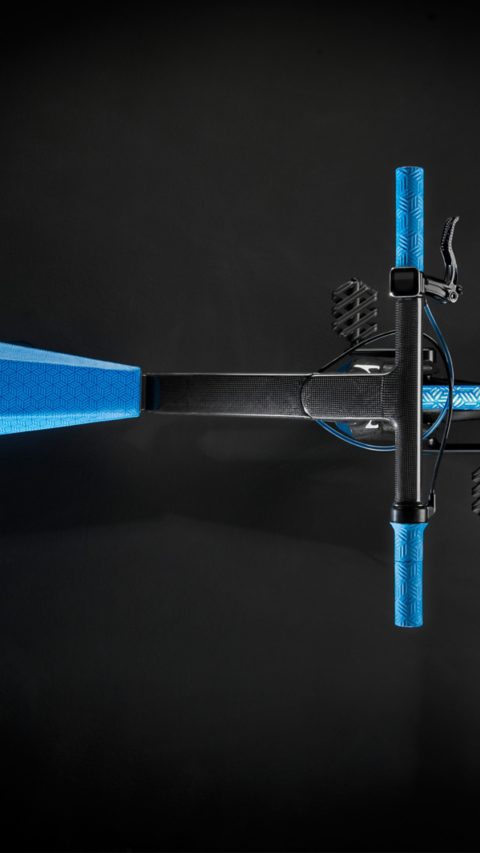Back to the Future… on an E-bike
Take the design of a bike model from 1865, opt for latest technologies and use high-performance plastics made by BASF. The outcome is an electrical bike which seems to be far ahead of one’s time. BASF’s thought experiment Concept 1865 resurrects the velocipede of that time with materials of today.
In the epic feature film, Back to the Future, main character Marty McFly travelled in a DeLorean DMC-12, an iconic car that combined the perfect balance of innovative technology and futuristic wow-factor. If in his time travels Marty had taken a bike instead of a car, it would surely have been the Concept 1865.

Through the power of collaboration, BASF is pushing the boundaries of innovation in the transport sector alongside product designers, DING3000. BASF wanted to rethink the original bike model, which disappeared from the market, by taking a bike design from 1865, the year in which BASF was founded, and seeing what would happen if they jazzed it up with materials made by them today. The result: a sleek, lightweight, electrical bike that is literally reinventing the wheel for inspiring the future of mobility and compensating the disadvantages of the original design by using 24 different BASF innovative plastics.
The original 1865 design, the velocipede, called upon larger a front wheel, which allowed for an improved transmission ratio. That’s speed, to you and me. And it’s a good starting point for the Concept 1865 e-bike, which mimics the classic design, but throws in some electronic power for that extra little bit of oomph. But it’s just as well the comparison stops there. The first bikes to be made, were called ‘boneshakers’ for a reason, and the entirely wooden bikes – with metal wheels if you were lucky – made for an extremely uncomfortable ride. Certainly a far cry from the height of luxury that we expect from our sets of wheels today.
Concept 1865’s tires are made of Infinergy® the world’s first expanded thermoplastic polyurethane (E-TPU).This material is extremely durable. The outer casing is made of Elastollan®: a TPU which can resist wear and tear on tarmac, sandy surfaces and even stony terrain. When it comes down to it, that means no bumps and bruises, and perhaps even more importantly, no punctures. So you can wave goodbye to that pump!
Though perhaps the most original material system used in this experiment is Ultracom®. A solution which combines the strength of endless fibre reinforced plastics with the flexibility and freedom of shape of injection molding into one. Brandishing strength, rigidity and resistance to temperature changes, this is a material that will stand the test of time and has the capability to transform not just the bike industry, but the future of mobility in general. ‘This is just the start of even greater things to come’, says Carsten Schelling of DING3000, ‘we hope to continue innovating with BASF.’.

Unfortunately for Marty and his sidekick, Doc Brown, the DeLorean didn’t have much success, and the manufacturers were forced to halt production earlier than anticipated. For the e-velocipede, the future is looking much brighter. ‘People ask us all the time where they can get a Concept 1865 bike. Although there are no plans to sell these to the public, it’s great to be able to show what we can do’, Schelling added. Rather than a case of going back to the future, it looks as though the materials used for this e-velocipede are future-proof.
Concept 1865 – Rethinking Materials
On Our Agenda
These topics matter to us. Learn more!


